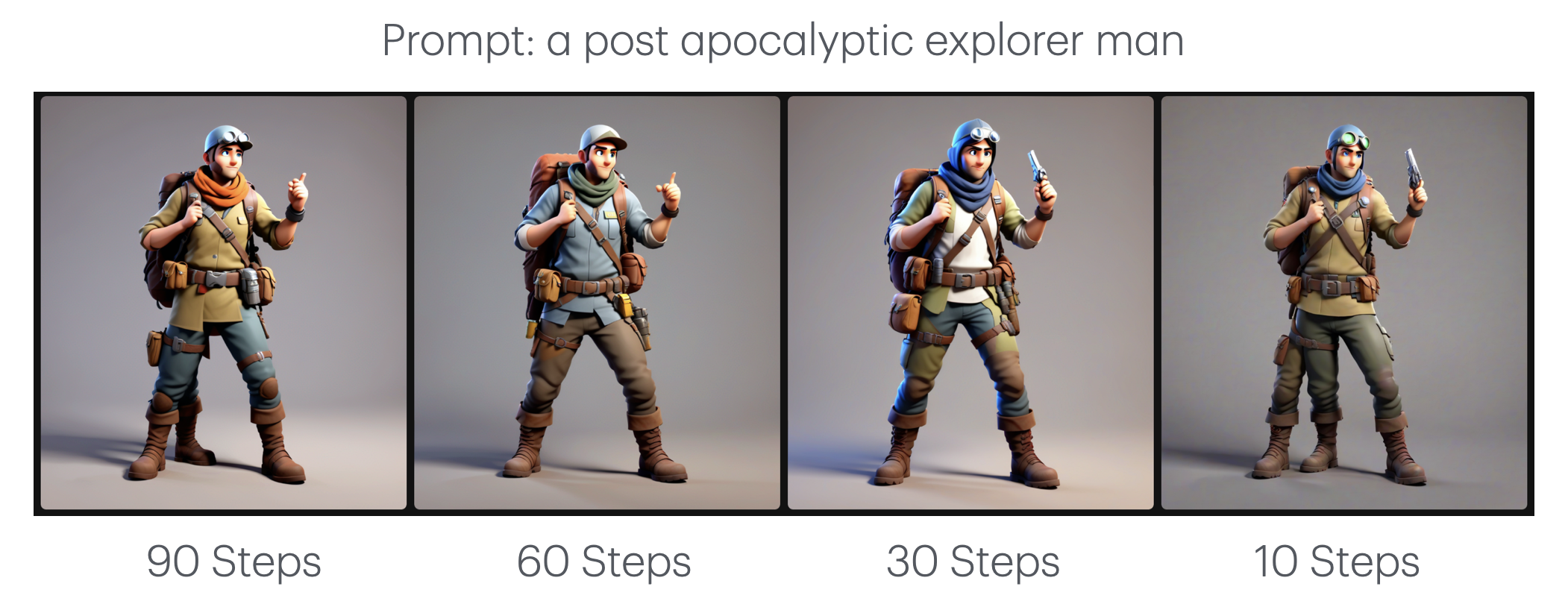Sampling steps refer to the number of steps the AI will take to create an image. The number you need will depend on the size and complexity of the image.
In generative AI, particularly in diffusion models, images are created through a series of repeated cycles called "sampling steps." During each step, a bit of noise is removed from the image, gradually refining it to match your text input. The number of these steps plays a crucial role in determining the quality and speed of the image generation.
More Steps: Increasing the number of sampling steps generally results in a slightly higher-quality image because more noise is removed over time. However, after a certain point, the improvements in quality become minimal, and additional steps mainly slow down the process.
Fewer Steps: Reducing the number of steps speeds up the image generation but might result in a less refined image.

Starting Point: A good default range is 30-60 steps. If the initial image quality is low, you can gradually increase the steps to see if it improves.
Trade-Off: Always consider the trade-off between quality and speed. More steps might not always be better, especially for simpler images.
Too Many Steps: There’s a common belief that more steps always lead to better images. However, this isn't true for all cases. For simpler images, like sketches or small designs, too many steps can introduce unnecessary details, leading to poorer results.
Complex Images: For more complex images, such as 3D renders or photorealistic scenes, higher sampling steps may be necessary to capture intricate details and maintain quality.
Simple, 2D Illustrations: Use fewer steps, as these styles don’t require as much refinement.
Complex, Photorealistic Images: Increase the number of steps to ensure the image captures all the necessary details.
Sampling steps are a key factor in balancing the quality and speed of your generated images. While more steps can improve quality, the benefits taper off beyond a certain point, especially for simpler images. Experiment with different settings to find what works best for your specific needs, and remember that sometimes, less is more.
Was this helpful?

Quentin